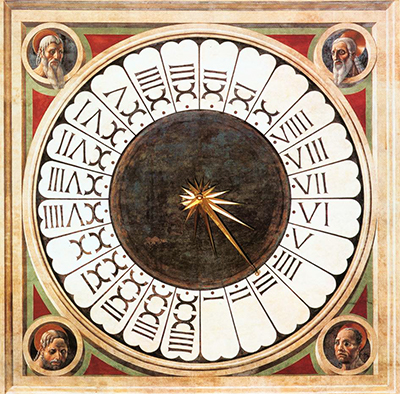It's one of the oldest functioning clocks in the world. It’s the Clock with Heads of Prophets for the Florence Cathedral. It's a witness to the genius and creativity of the Renaissance.
In many ways, it symbolises the Renaissance spirit. This was a time when both science and art grew and evolved. And the Florence Cathedral clock is one of those rarest of things. It’s both a scientific instrument and a work of art. The clock is located over the main entrance of the famous cathedral of Santa Maria dei Fiore, or the Duomo as it's locally known. It was built to mark the 'ora Italica' (Italian hour), which means the time from sunrise to sunset. This time system was prevalent when the clock first appeared.
The clock’s main purpose was to mark the hours of prayer, for the chanting of the Divine Office. The clock is a painted fresco in a square shape. The portraits of the heads of four different prophets appear in each corner of the square. They are thought to represent Biblical prophets. Some think they represent Matthew, Mark, Luke and John, the four evangelists. The clock first appeared in 1443, so it’s well into its 6th century of existence. The clock had two creators, one from the creative and artistic side, the painter Paolo Uccello. Angelo di Niccolò, a clockmaker, managed the scientific/engineering side of things. The artist Paolo Uccello is the one to whom everyone attributes this masterpiece. Uccello was born in Protovecchio in Tuscany in 1396.
He was born Paolo di Dono, and acquired the second name of Uccello as he enjoyed painting birds. His father was a barber/surgeon. At the age of 10, he was apprenticed to Lorenzo Ghiberti, a well known sculptor. Ghiberti's style as late Gothic style was a clear influence on the young boy. This was obvious in his work as he grew older. As time moved on, circumstances changed for the clock. At one stage, it was forced to stop telling the Italic time and tell modern time instead. But the clock has turned in a full circle and it’s back to telling the time in the way it was originally meant to do.




